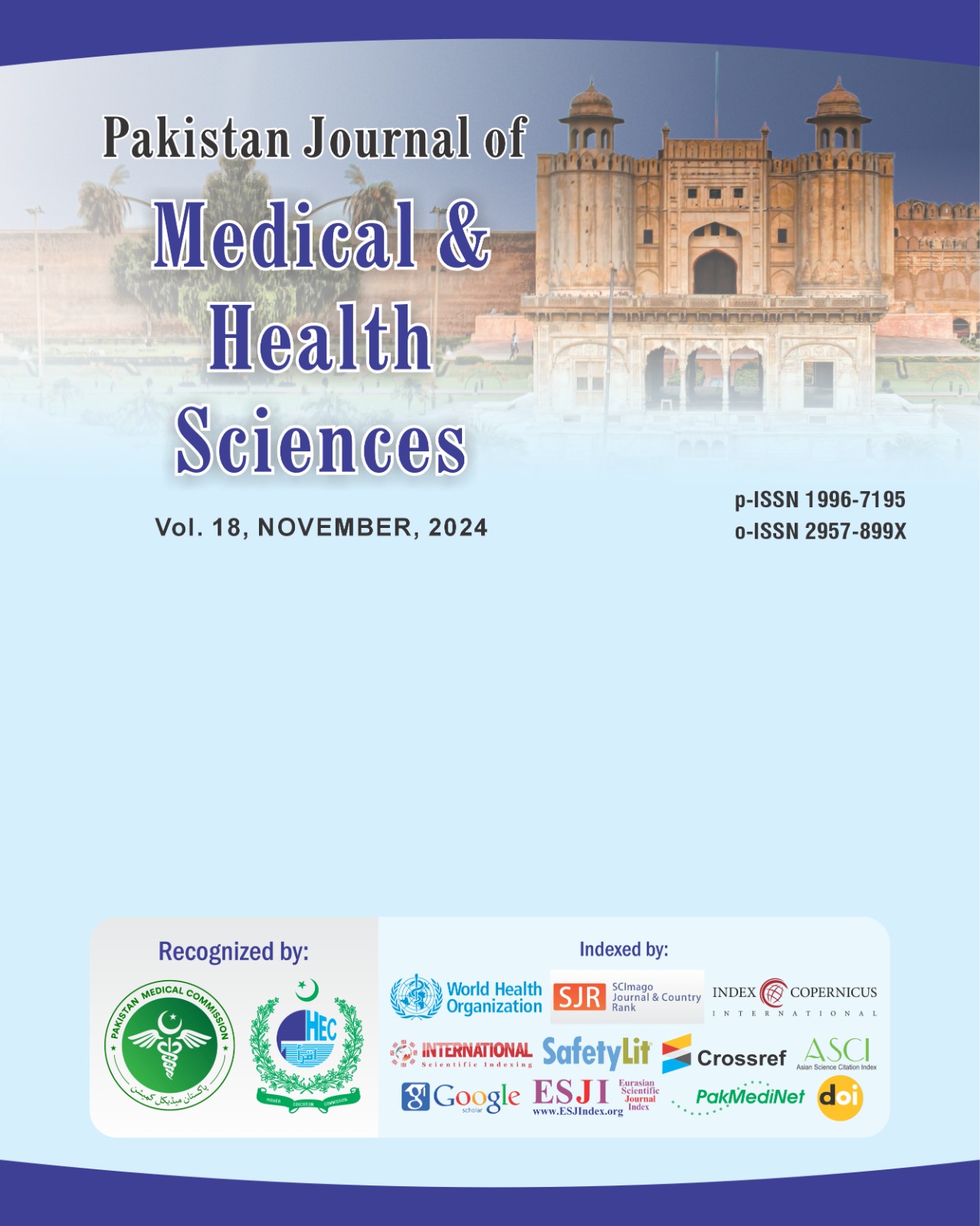Obstetric and Neonatal Outcomes in Clinically Diagnosed Placental Abruption with and Without Placental Histopathologic Confirmation
DOI:
https://doi.org/10.53350/pjmhs020241811.7Abstract
Background: Placental abruption, characterized by the premature separation of the placenta from the uterine wall, is a critical obstetric complication associated with significant maternal and neonatal morbidity and mortality.
Aim: To compare obstetric and neonatal outcomes in patients diagnosed with placental abruption clinically, with and without histopathologic confirmation.
Methods: This case-control study was conducted in the Department of Gynae and OBS RHQ Hospital Chilas during December 2022 to June 2023. A total of 125 patients diagnosed with clinically confirmed placental abruption were included in the study. The patients were divided into two groups: Group A (clinically diagnosed with histopathologic confirmation) and Group B (clinically diagnosed without histopathologic confirmation). Data on maternal outcomes (e.g., cesarean section rate, hemorrhage, preterm labor) and neonatal outcomes (e.g., birth weight, Apgar scores, NICU admission, perinatal mortality) were collected.
Results: The study found that the incidence of cesarean section was significantly higher in Group A (histopathologic confirmation) compared to Group B (52% vs. 40%, p = 0.04). Neonatal outcomes were also worse in Group A, with a higher incidence of low birth weight (45% vs. 30%, p = 0.02), lower Apgar scores at 5 minutes (6.5 vs. 7.2, p = 0.01), and increased NICU admissions (35% vs. 20%, p = 0.03). Perinatal mortality was higher in Group A (6% vs. 2%, p = 0.08), although this difference was not statistically significant.
Conclusion: Clinically diagnosed placental abruption with histopathologic confirmation is associated with poorer obstetric and neonatal outcomes compared to cases without histopathologic confirmation.
Keywords: Neonatal outcomes, placental abruption, histopathologic confirmation



